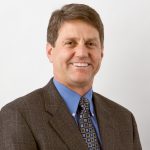In the spring semester of 1981, I was a junior majoring in agronomy, at Iowa State. As a student, I was looking for work experience; the kind that was supposed to determine my career choice. After hearing of a possible summer job in the corn breeding department, I met with Dr. Ted Crosbie. On the spot, Dr. Crosbie offered me a job on his crew. I had no idea what I would be doing, but I accepted – I needed a summer job. Looking back now, it all seems so strange. I was a young kid focused on soil science, but accepting a job in corn breeding. What was I thinking? How would a job in corn breeding ever pay off for a kid certain to end up in soil conservation?
That summer was a blur. Nothing made much sense to me. Every day, I worked in the field pollinating corn. The only thing I really remember was the work I did for one grad student, Keith Newhouse, who was working on his dissertation under Dr. Crosbie. Keith was researching whether or not certain corn varieties would respond better to no-till.
By the end of that summer, I absolutely knew I wanted nothing to do with corn breeding; a good thing for a kid. After graduation, I went to work for the Soil Conservation Service (later known as the Natural Resources Conservation Service) and found my calling.
For 33 years, I lost track of Dr. Crosbie and Dr. Newhouse. Hey, they were nice people but they were corn breeders, not soil conservationists. How could their work interest me?

It wasn’t until the summer of 2014 that Keith and I reconnected when he contacted me on LinkedIn. I was surprised to learn Keith had been appointed the Sustainability Coordinator for Land O’Lakes. After exchanging a few emails, Keith and I decided to get together. Keith wanted to know about everything we were doing at Agren and he had a vision of using our conservation software at Land O’Lakes. Our initial meeting led to a renewal of our friendship and the beginning of our collaboration to build a sustainability program in Land O’Lakes.
In retrospect, if I had not taken that job with Dr. Ted Crosbie and his corn breeding program, I would not have known Keith. And obviously then, the miraculous reconnection 33 years later would not have led to our current collaboration with Land O’Lakes. I find it extraordinary that a chance friendship that endured years of neglect could have such a meaningful impact on the future of soil and water conservation; especially a friendship between a corn breeder and a soil conservationist.
Last month Keith Newhouse announced his retirement from Land O’Lakes. Keith, from all your friends at Agren, we wish you the best in your retirement. We sincerely hope you find a way to stay involved in conservation.
In July of 2016, Dr. Crosbie died very suddenly of an assault to his lungs. For anyone who knew Dr. Crosbie, his death was a serious blow to the agriculture community. In the words of Ron Farrell, a member of Agren’s Board of Directors, “The world lost a miraculous innovator… He will be missed.” I think Ron’s words sums up how a lot of us felt about Ted.
 The Greatest Generation
The Greatest Generation
Thanks for the kind words, Tom. I also owe a tremendous amount to Ted and his leadership across the decades. Since we were both plant breeders, we did remain connected across those decades, and Ron’s comments are spot on.
Keith
I’m impressed to know that somebody, anybody, was researching corn varieties for no-till as early as 1981. Tom, as an Extension Ag. Engineer working with conservation tillage systems, I often heard comments to the effect that none of the companies was interested in developing hybrids specifically for no-till. Are there currently any hybrids advertised for no-till situations? (I have not researched this question online, so I may be way behind.) I can’t recall hearing any speaker at a no-till meeting, such as Dwayne Beck, talk about such hybrids.
Randall, I am not sure about your question. I will have to check into it.